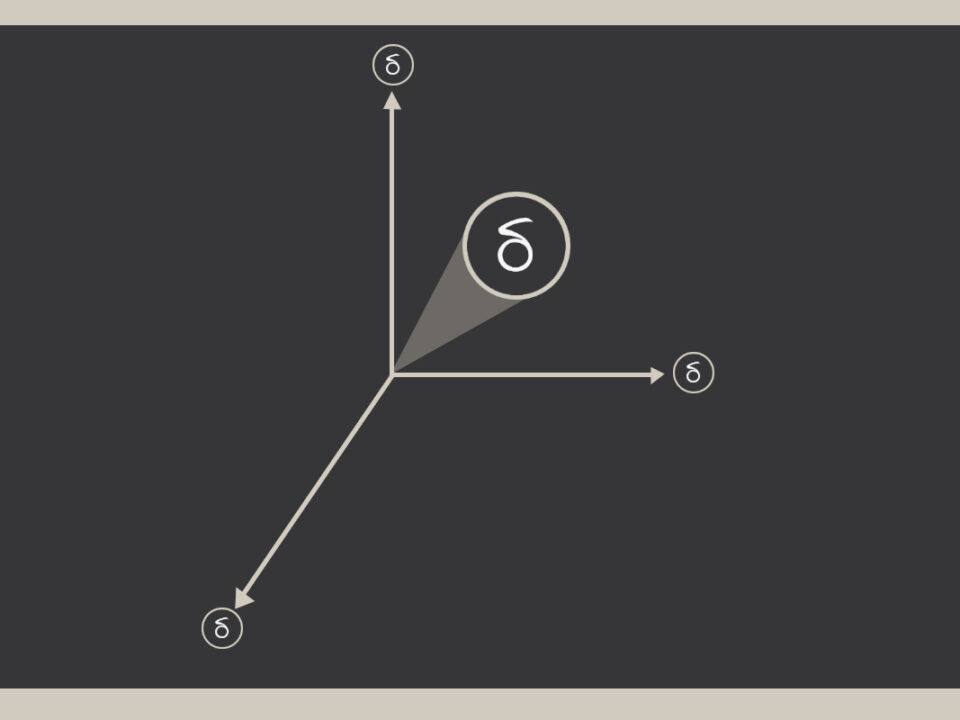The Systems Delta: Harnessing Chaos
There are few guarantees in the small business world (or in digital marketing for that matter).
However one thing that can be guaranteed is that if don’t have systems in place to manage your business, you’ll always feel like you’re falling behind, fighting constant fires or worst of all — disappointing (and end up losing) your customers/clients.
In the previous few posts I went over search-first digital (alignment), differentiation (why your customers should choose you) and relevance (being remembered most for your particular niche/problem you solve) — all of which can be part of your larger digital marketing system.
While these elements can be the building blocks to a digital marketing system (or we can just call it marketing these days, really), your particular system will likely be much different than others (and probably should).
Regardless of what that system looks like, it’s still a system – this particular one is used to help capture & generate (good) leads for your business.
The Systems Delta
As mentioned above, once your small business starts seeing more activity coming in through your digital marketing system, you’re going to learn quickly that without systems in key areas, you’re going to have (endless) chaos.
Harnessing that chaos isn’t difficult – you just need to know which systems you need to create.
Below are likely the most common (and perhaps most important) to identify and map.
1. Sales (How you convert leads from your marketing system)
2. Onboarding/Scheduling (What you need to get started after sales and how you get them in your operational queue).
3. Service Delivery/Project Management (How you follow through and deliver on your service/offer)
4. Post-Service/Support System (How do you close out – or continue – the story with your customer).
These obviously can get as simple or complex as you want to make them (I prefer simplicity), but what’s important is that it maps the progression for your customers/clients as they interact with your business.
These systems can have their own “deltas” or “gaps” that you’ll need to identify and zero out eventually (which we’ll go over eventually), but for each of these systems that you don’t have in place your overall “Systems Delta” (or gap/distance) will grow larger.
As you get these systems into place, your “Systems Delta” will keep getting smaller — eventually becoming zero.
A “Systems Delta” of zero means you’ve perfectly harnessed the chaos – and have provided a seamless experience for your customers/clients.
The Systems Delta And Functions
If you’ve been following along here in these posts from the beginning, you’ve likely noticed that I like to tie in a lot of the marketing and small business world from a mathematical point of view.
No different here with your systems — these systems are in essence a series of functions, nearly identical to how they’re used in the mathematics world.
A function, as a reminder, is just an object that takes in an input and produces an output.
That’s it – that’s all you have to remember.
Your Sales function takes in leads from your marketing system (input) and produces a client/customer (output) to your Onboarding function.
Your Onboarding/Scheduling function takes your client/customer (input) and gathers in important information (output) needed for your Service/Delivery/Project Management function.
Your Service/Delivery/Project Management function takes your Onboarding/Scheduling information (input) and produces/delivers your service (or offer or whatever your business produces), sending important information to your Post-Sales/Support function (output).
Your Post-Service/Support function takes details from your delivery system (input) to guide the next chapter in your customer/clients’ story – often through gathering feedback, follow up offers, or on-going support for the service or product you’ve delivered (output).
Starting Small/Simple
As you start mapping out your systems/functions, you’ll likely start running scenarios and “what ifs” as you think things through, which is why it’s usually best to start simple.
Most small business’ systems aren’t perfect from the start — in fact, many get stuck while trying to make their systems “perfect”.
Even a “perfect” system will run into issues at some point, so you’ll be adjusting things as you go regardless of how good you make them out of the gate.
Go for improvement over perfection as you get started. As each client passes through your system (function) progression, you’ll need to gather data to help you improve those systems.
To help you with gathering that data, integrating a digital tech stack for your small business will help accelerate and iterate on those systems.
Weaving Digital Platforms Into Your Systems Set
We started with digital for your marketing system and many of the systems described above have their own digital counterparts (and can flow seamlessly together in many cases).
Digital platforms exist for each step in the process like Customer Relationship Management Platforms for marketing and sales, Customer Onboarding Platforms for onboarding, Project Management Systems for delivery, and Customer Feedback and Support Platforms for post-service/support systems.
Since these systems are digital, you’re able to quickly and efficiently gather data about each system and use it to learn about those systems’ performance.
Whether you choose to integrate digital platforms in your system set is ultimately up to you (many small businesses are small enough that they can manage most things offline), but the important part is that without measuring how each system is performing, it’s really hard to know if there could be room for improvement.
Which brings us to our next delta: your “Measurement Delta” – identifying the important things you’ll want to start measuring from your systems to get the most out of your small business.




